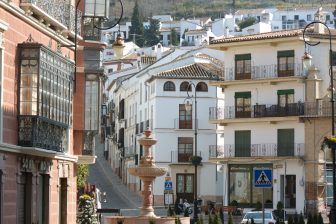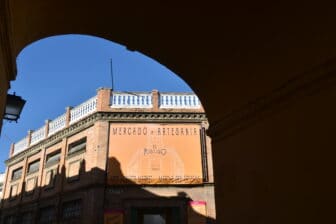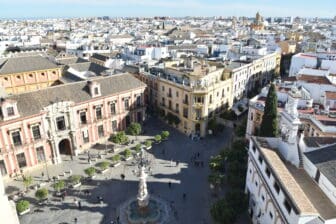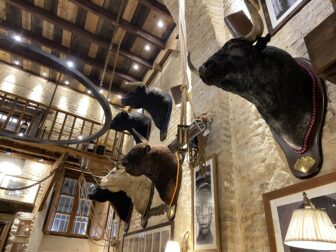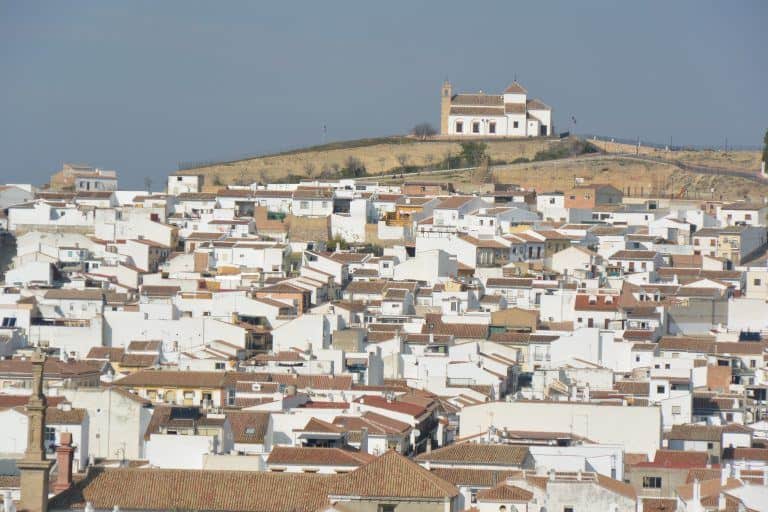
[ Feb.2018 ] After eating in the bullring in Antequera in Andalucia in southern Spain, we walked towards the centre of 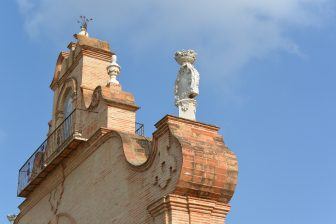
First, we noticed the brick gate just outside of the bull ring with the elaborate design.
This is Estepa Gate originally built in the middle of the 18th century.
But the current one is the 1998 reproduction with the same original design.
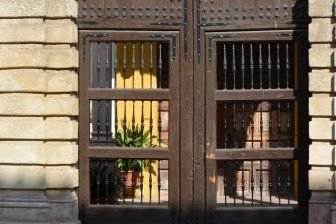
Currently, no cars or people can go through the gate and a road is built surrounding it.
This road is one of the main ones called Infante Don Fernando and this led us to the centre.
Infante Don Fernando was the king who conquered Antequera in 1410 during the war against the Muslim Kingdom of Granada.
The weather was fine, though the forecast was cloudy and it was very warm, so my preparation for the cold ended up all in vain.
From the San Sebastian square, where the church of the same name was, we went up the slope towards the Alcazaba (a Moorish fortification).
Some parts of the slope was stairs with white walls and when we 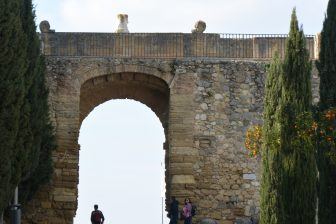
Towards the church on the opposite hill, the beautiful view of the white houses spread out before us.
We stopped there and enjoyed the view for a while and when we turned around, there was a huge arch there.
This is the Arco de los Gigantes built in 1585.
We went through this into the site of Alcazaba.
This Alcazaba was built in the 14th century above the Roman ruins just like the one in Malaga.
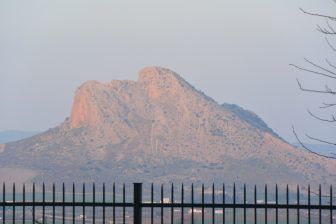
What was noticeable was a strange shaped rock mountain.
I looked up on the internet and found that this rock has a romantic name, “The Lovers’ Rock”.
Apparently there is a legend that during the Islamic time, a man and a woman from the different clans fell in love and committed a double suicide jumping from this rock.
According to a website, the English poet, Robert Southey who lived at the end of the 18th century to the 19th century developed this legend to make a story of a Muslim girl and a Christian slave owned by her father.
After enjoying the view, we went into the church within th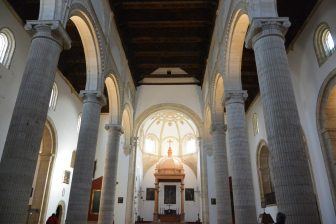
This church was built in the 16th century in the Renaissance style, but the ceiling was in the Mudejar style (a mixture of Muslim architecture and Christian style).
It seemed that there are many churches and buildings of Mudejar style in this town.
I think it would be worth staying one night here to look at more places of interest, but we did not have time, so after seeing the church, we walked back towards the bus station, losing our ways sometimes.

